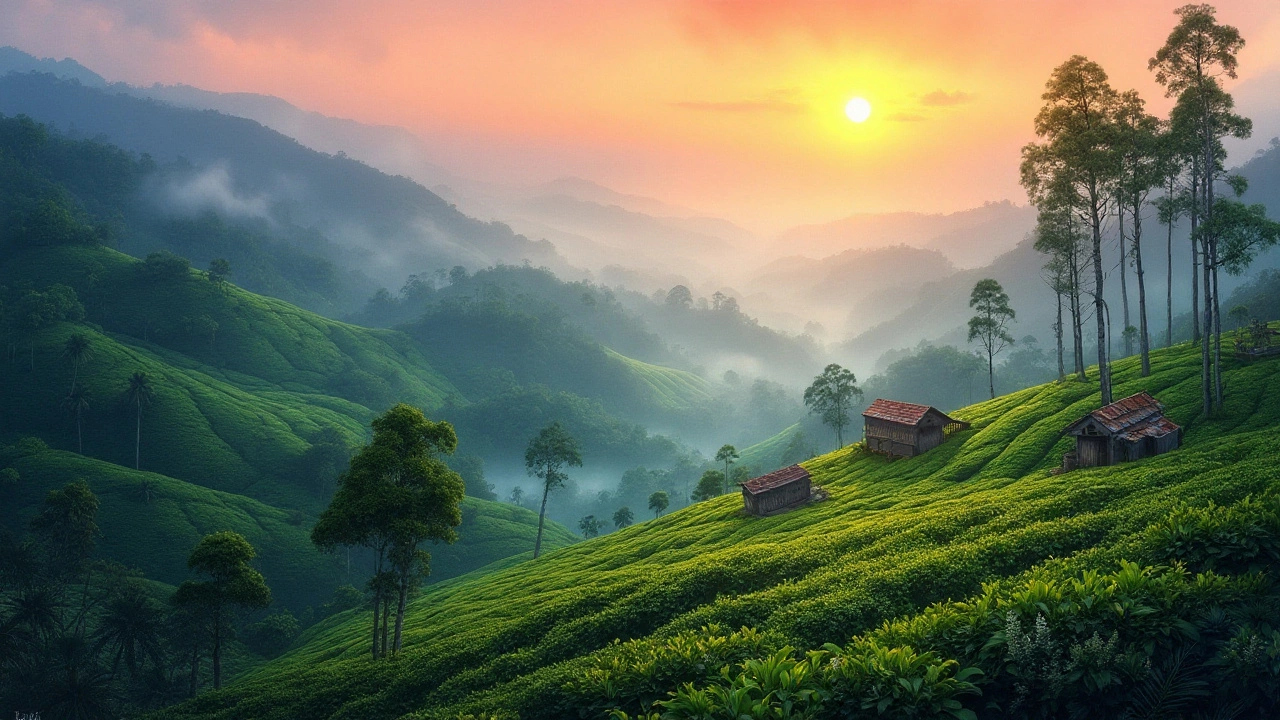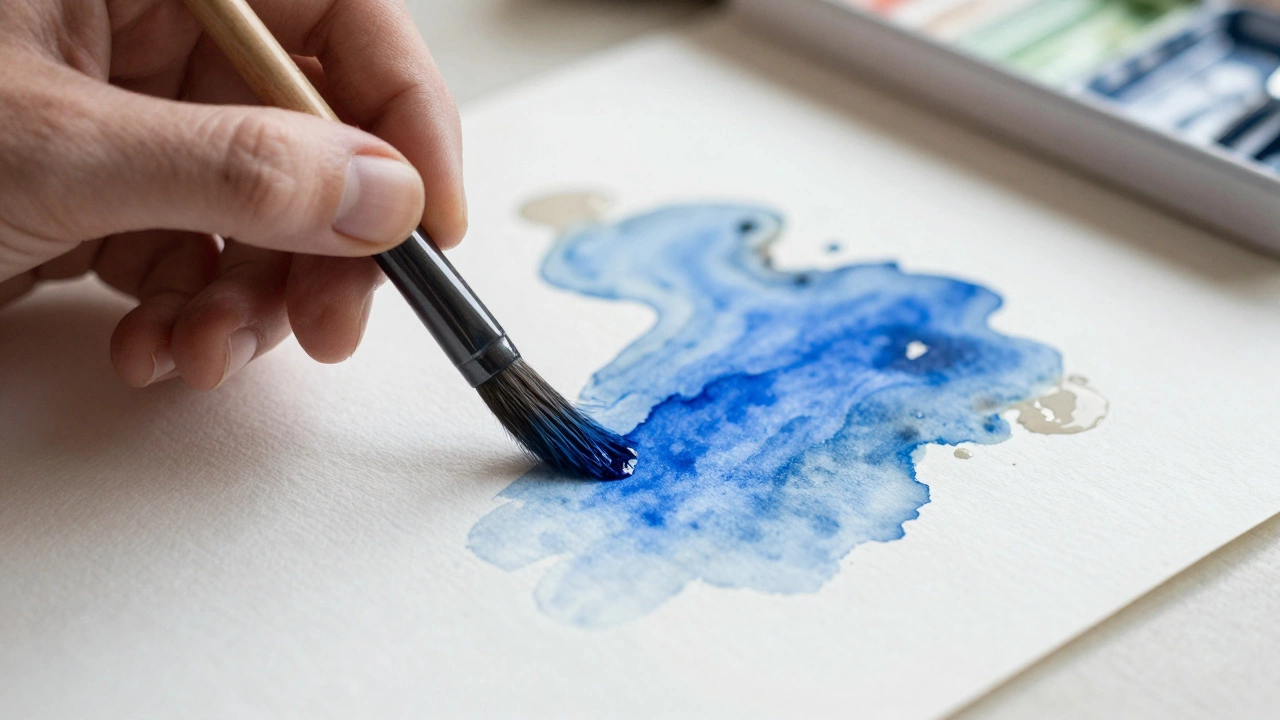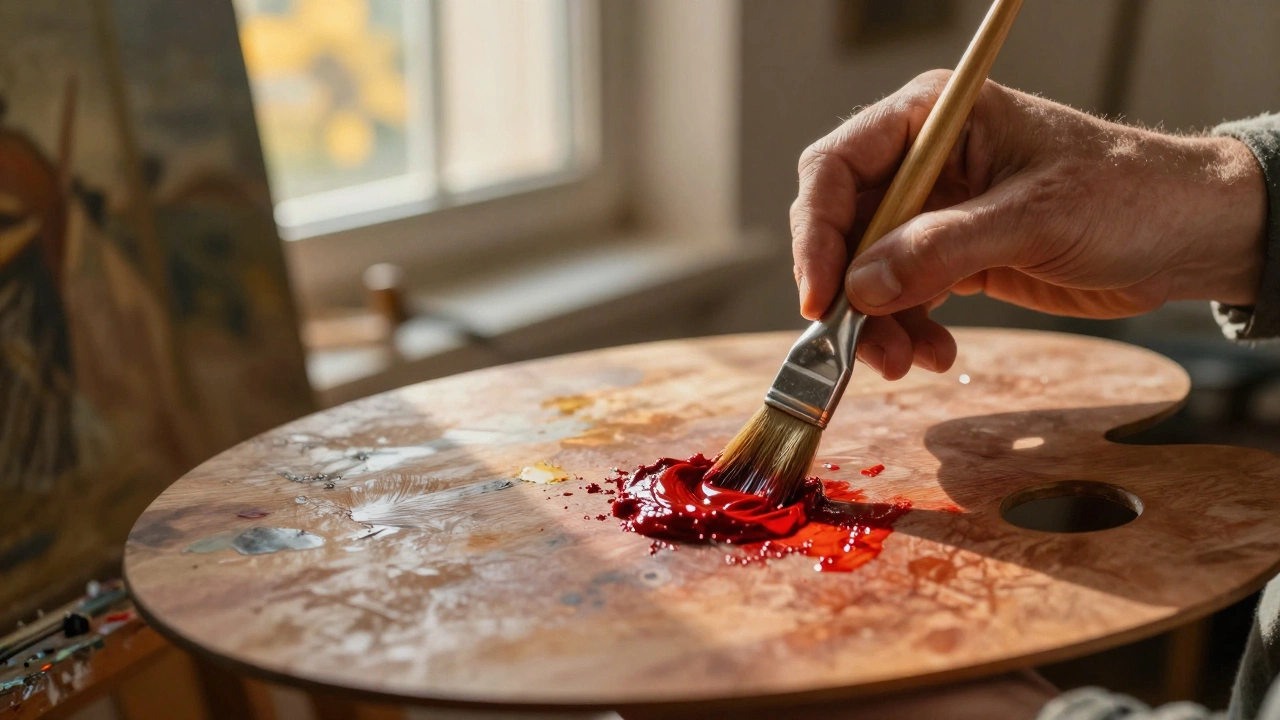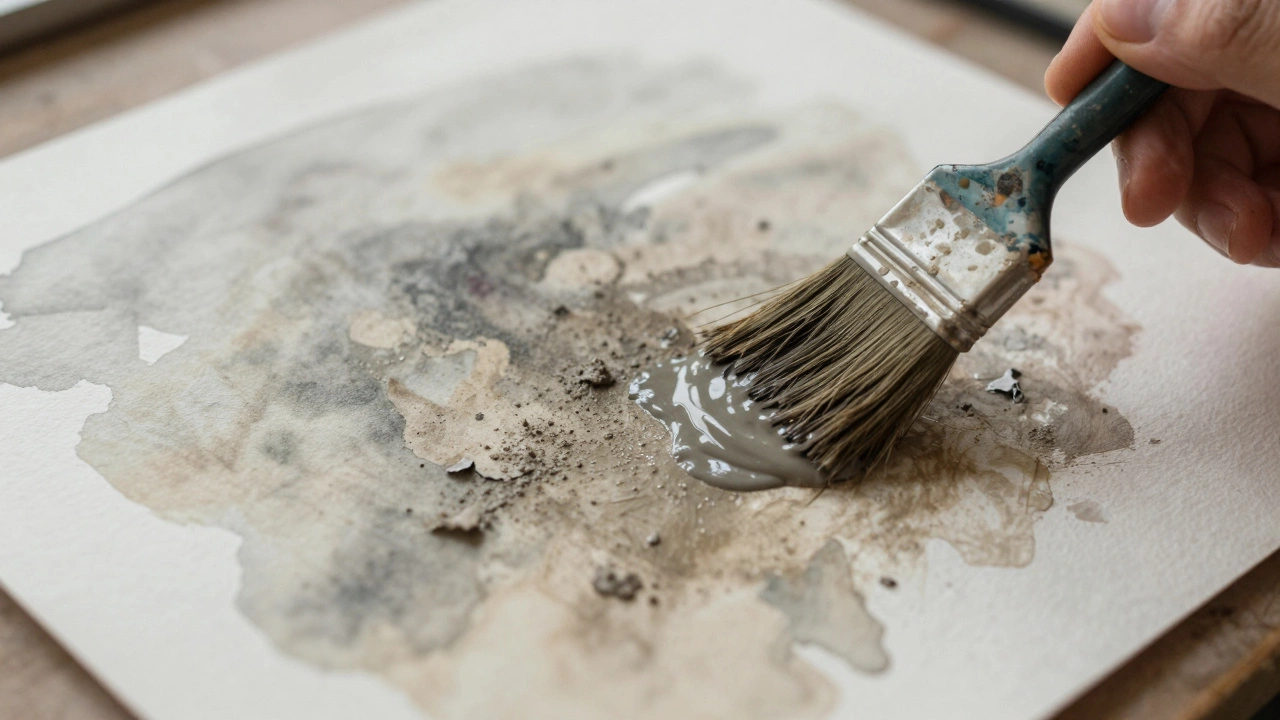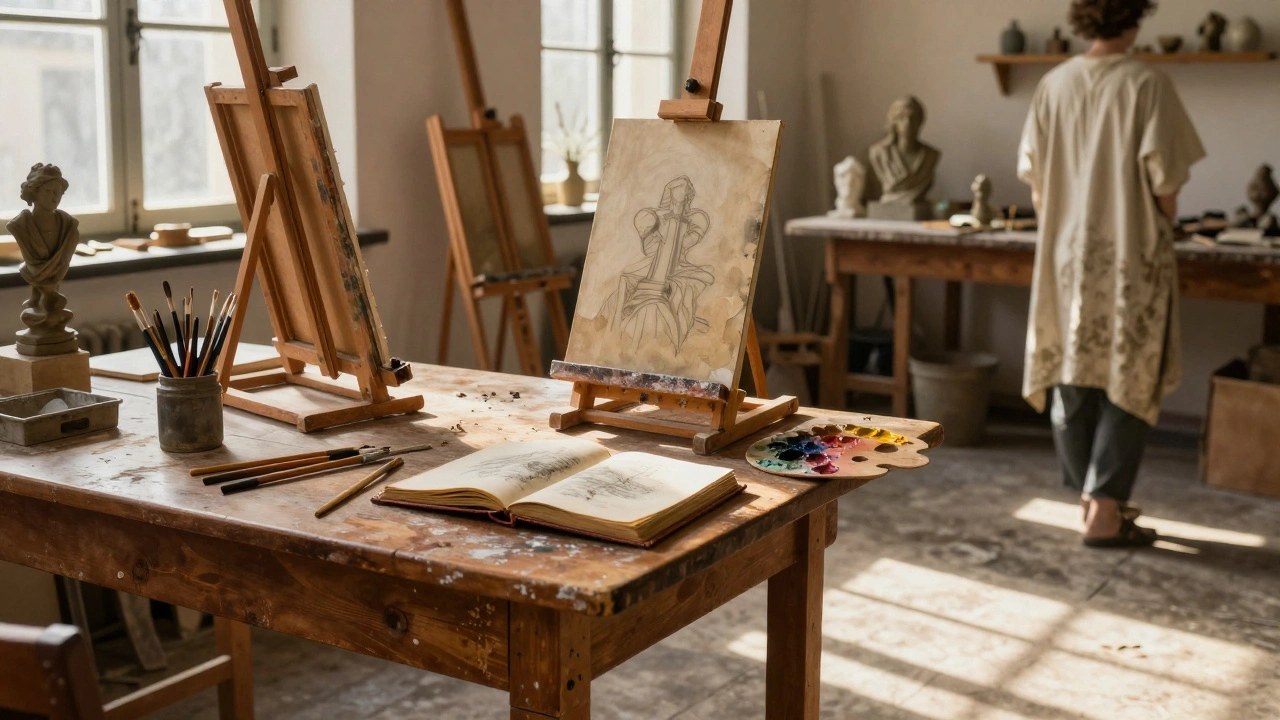Landscape painting, a timeless genre, offers a gateway into the serene and sometimes turbulent vistas of our world. Artists through the ages have been drawn to the allure of the natural environment, striving to encapsulate its essence on canvas. With each brushstroke, they endeavor not only to replicate the visual spectacle but to convey deeper narratives embedded in the scenery.
The charm of landscape painting lies in its versatility and the emotional responses it can evoke. It is more than mere representation; it is an artist's personal dialogue with nature. This exploration allows for a reflection on the world's beauty and the human condition. Let's embark on a journey to understand what truly defines the focus of landscape painting, with insights to enrich both art appreciation and creation.
- The Art of Capturing Nature
- Historical Influence on Landscape Art
- Techniques to Enhance Natural Beauty
- Emotional and Philosophical Elements
- Tips for Aspiring Landscape Painters
The Art of Capturing Nature
Capturing nature through landscape painting is an endeavor that has fascinated artists for centuries, urging them to express more than the mere physical appearance of a scene. It invites a profound exploration of the natural world—not just as a spectator, but as an active participant. The challenge begins with learning how to intricately balance the harmony of light, color, and texture to reflect the true essence and emotion of the setting. It's this interplay that transforms a simple geographical portrayal into a vivid, engaging story on canvas. Light is often viewed as the heart of a landscape painting, constantly shifting, adding dynamic depth and contours to a scene, demanding artists to be equally adaptive in their expression.
Artists often immerse themselves in the very landscapes they wish to capture, enabling a connection that goes beyond visual observation. The emotive power of nature is something artists strive to harness, presenting climate, time of day, and mood with subtle brushwork and stirring color palettes. There is a uniqueness in how each artist interprets the landscape’s language, a reflection of their personal interaction with the natural world. Nature depiction in art is, therefore, not just about replicating what's seen, but translating the symphony of senses experienced within the space.
Historically, this lifelike portrayal of nature has roots in different cultures, tracing back to works in ancient China, where artists like Guo Xi captured the essence of landscapes during the Song Dynasty. Their work was not just a presentation, but a philosophical exploration of nature's order and chaos. In the Western world, the Romantic era saw artists like J.M.W. Turner and Caspar David Friedrich infusing their landscapes with emotion and storytelling, challenging viewers to see beyond the visible.
"Art is not what you see, but what you make others see." — Edgar Degas
On a practical level, contemporary painting techniques continue to bring landscapes to life. Methods such as plein air painting embrace the traditional approach of working outdoors, inviting unpredictable elements like wind and light changes to influence the work, adding an organic authenticity to the painting. Understanding different techniques allows artists to play with perspectives, introducing foreground and background elements with clarity. It requires both technical skill and a deep understanding of the painting’s subject, and that engagement with nature is what makes landscape painting so resonant.
For beginners or pros alike, the craft of capturing nature is also about patience and keen observation. It's important to appreciate the subtleties in movement and growth, like the rustle of trees or the quiet rippling of water. These nuances are what drive the evolution of landscape painting, slowly yet steadily advancing the tradition that continues to mesmerize both artists and their audiences. By focusing on these details, one finds an endless source of inspiration and challenge, making landscape painting a compelling pursuit for any art enthusiast.
Historical Influence on Landscape Art
Landscape painting has a rich tapestry interwoven with the threads of history, reflecting cultural shifts, ideological transformations, and personal expressions. The roots of landscape painting can be traced back to Ancient China, where artists viewed the depiction of nature as a spiritual act. Northern Song Dynasty painters like Guo Xi sought to capture the essence of nature, ascribing to a belief that landscapes offered a spiritual sanctuary. Over in Europe, it wasn't until the 16th century that artists started to regard landscapes as worthy subjects in their own right, beyond mere backdrops for religious or mythological narratives. With the Renaissance, there was a burgeoning fascination with observation and naturalism. Pioneers like Leonardo da Vinci and his meticulous studies of nature's intricacies laid early groundwork that would blossom into the full-fledged landscapes of later eras.
The influence of the Dutch Golden Age is unmistakable in this evolution. The 17th century saw the Netherlands flourishing economically, socially, and artistically. Artists such as Jacob van Ruisdael captivated viewers with their serene yet powerful depictions of the Dutch countryside. The focus on natural light and realistic representation marked a significant shift towards independent landscape art. This period mirrored an emerging sense of national identity, and painters cleverly utilized landscapes to reflect socio-political sentiments, crafting works that resonated deeply with the public electorate.
As the world edged into the 19th century, the Romantic movement introduced a new dimension to landscape painting. Romantic painters like J.M.W. Turner and Caspar David Friedrich infused emotion and subjective interpretation, transforming landscapes into powerful vessels of personal and philosophical reflection. Turner's turbulent skies and Friedrich’s mystical mountains offered visual poetry that spoke to humanity’s awe and vulnerability before nature’s grandeur. Later, the Impressionists, with Monet at the helm, revolutionized landscape painting through their emphasis on light and color. Painting en plein air, they introduced vibrancy and immediacy, capturing the ephemeral beauty of nature's varied atmospheres. As Claude Monet once said,
"I wish I had been born blind and then suddenly gained my sight so that I could fully understand the blessings of light."
Landscape art in America brought its own unique flavor, inspired by the vast and dramatic settings of the continent. Hudson River School artists, like Thomas Cole, depicted expansive vistas that were both majestic and untamed. These paintings, steeped with a sense of manifest destiny, captured the imagination of a young nation. The transition into modernism sparked yet another evolution, as artists like Georgia O’Keeffe broke new ground by exploring abstract elements within landscapes, inviting viewers to contemplate nature's forms from fresh perspectives. This willingness to redefine boundaries has kept landscape painting vibrant and relevant, even as contemporary artists like David Hockney employ new technologies to capture the ever-evolving natural world.
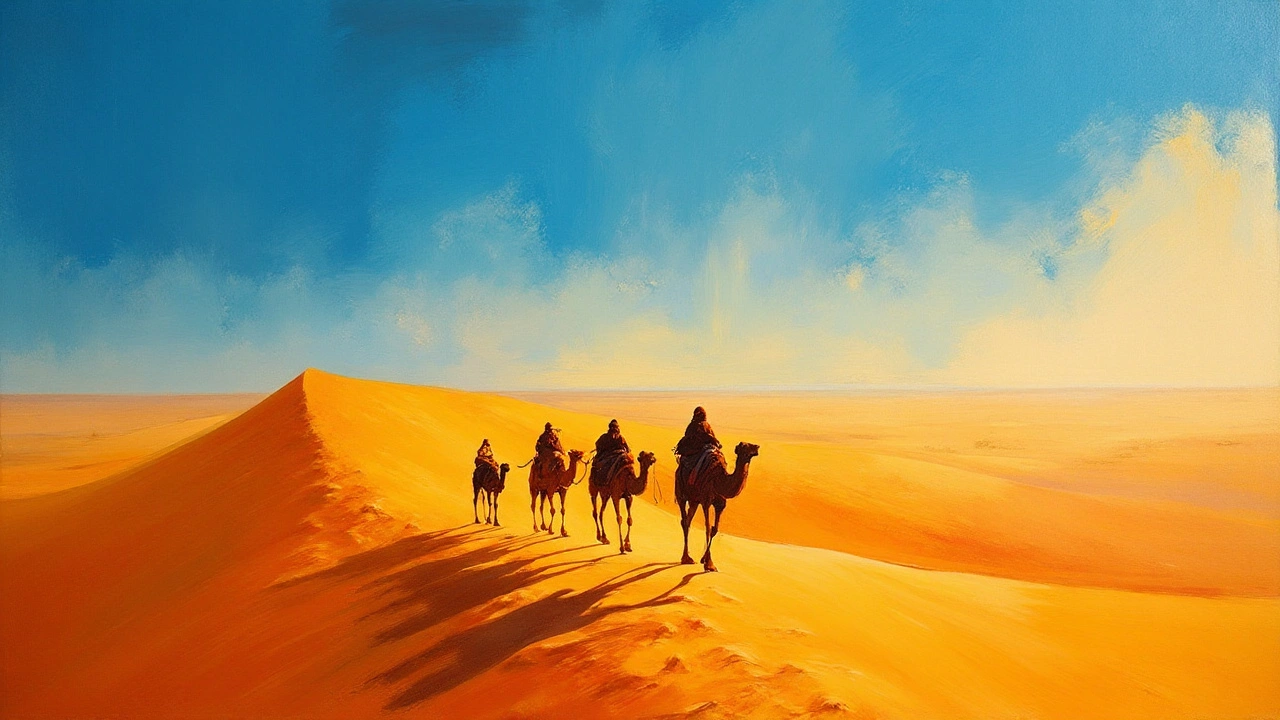
Techniques to Enhance Natural Beauty
One critical aspect that sets landscape painting apart is the artist's ability to employ techniques that heighten the natural beauty of the scene. At its core, the goal is to not simply mirror reality but to infuse it with personal insight and emotional resonance. To start, mastering light and shadow is paramount. Artists often use chiaroscuro, a technique that contrasts light and dark to create a three-dimensional effect. This skill can transform an ordinary scene into one brimming with drama and depth, drawing the viewer's eye across the canvas with interest. Additionally, the strategic use of color is vital in landscape painting. By understanding color theory, painters can manipulate hues to evoke certain feelings—warm colors might suggest the heat of a summer day, while cool tones might convey a somber or peaceful evening.
Texture plays a crucial role in rendering the elements of nature with vivid realism. Through varied brushwork—the bristles can dance lightly for fine grasses or press heavily for the rough bark of an ancient tree—painters can evoke tactile sensations in the viewer, making them almost feel the portrayed landscape. For those looking to explore landscape painting techniques, adopting the practice of plein air painting can be immensely beneficial. This method involves painting outdoors, allowing artists to observe and capture the changing light and motion in real-time. Nature serves as an ever-changing canvas, demanding the artist's attentiveness and adaptability to swiftly altering conditions. This immediacy injects a spontaneity and freshness into the work that studio paintings often lack.
Composition is another integral element to enhance a painting's impact. Golden ratio, rule of thirds, and leading lines are all compositional techniques that help guide the viewer’s gaze and create harmonious balance within the frame. An effective composition will not only direct the viewer's eye but could suggest movement, depth, or narrative within the painting. Moreover, the inclusion of atmospheric perspective—depicting the way distant objects appear lighter and less detailed than those close by—can significantly enhance a sense of space and endlessness in a landscape. Leonardo da Vinci once remarked on this technique, emphasizing its importance in capturing the resonance of natural beauty.
For a richer, dimensional portrayal, layering is often employed. This involves building up layers of paint to add depth and complexity, creating a more lifelike depiction. Some artists favor glazing—a technique where thin, translucent layers of paint are applied over the top of one another to subtly transform colors and tones. This can lend the artwork a luminous quality, making skies glow and waters shimmer with reflected light. Experimentation with different materials and techniques allows artists to find what best expresses their vision of the landscape. Incorporating mixed media, like pastels combined with acrylics or inks with watercolors, can introduce exciting textures and contrasts not possible with traditional methods alone.
To bring life and a sense of movement to their works, artists often focus on the dynamics of weather and seasons. Capturing the scene's essence might entail depicting a stormy sky with thick, expressive strokes or showing the gentleness of a summer breeze through soft, fluid lines. Time of day, too, becomes a bounded exploration—whether the dramatic shadows of dusk or the clarity of a sunlit noon. These elements provide not only a temporal context but evoke the sensations and emotions embodied in these fleeting moments. Landscape painting thrives at the intersection of artistic skill and a deep appreciation of the natural environment, where each technique employed by the artist serves the purpose of amplifying and revering nature's splendor.
Emotional and Philosophical Elements
In the realm of landscape painting, emotional and philosophical elements play a pivotal role, transcending mere visual representation. These paintings often evoke a profound connection with viewers, pulling them into the soul of the landscape and sometimes even into the mind of the artist. This endeavor to translate not just the beauty of nature but also its underlying moods and philosophies creates a rich tapestry of meaning. Early landscape artists like J.M.W. Turner and Caspar David Friedrich profoundly understood this. Turner, for example, often infused his works with themes of awe-inspiring natural forces as reflections of man's smallness in the universe, while Friedrich's moody compositions delved deeper into the spiritual, inviting reflection on humanity's place within the world's vastness.
Such artworks stir diverse emotions—tranquility, nostalgia, awe, or even melancholy—each brushstroke a part of a conversation between the artist, nature, and the viewer. The style known as the sublime in landscape art is a testament to this philosophical intertwining, aiming to evoke admiration mixed with fear as viewers confront the grandeur and unpredictability of nature. This notion was articulated beautifully by Edmund Burke, who recognized the power of such contrasts in evoking strong emotional responses.
Burke once noted, "The passion caused by the great and sublime in nature, when those causes operate most powerfully, is astonishment."Such reflections are deeply personal yet universally relatable, making landscape art an enthralling form of storytelling.
A fascinating aspect of landscape painting is its capacity to mirror societal changes and attitudes towards nature. In the Romantic era, for example, landscapes became metaphors for untamed wilderness, offering a backdrop for philosophical contemplation. They were not mere depictions but rather expressions of longing for an idealized, untouched world, symbolizing freedom and exploration. This introspective dialogue continues today, as contemporary artists often embed environmental concerns into their work, reflecting the current dialogue on climate change and conservation. These pieces serve as reminders of the fragility of the landscapes depicted, imbuing the art with a call to awareness and action, offering poignant narratives about loss and preservation.
Creating or appreciating landscape art with a philosophical lens allows us to explore complex themes such as our relationship with the earth, the impermanence of time, and even existential inquiry. As one loses themselves in the swirls of Van Gogh's dreamy, star-laden skies or the serene expanses of Constable's English countrysides, the essence of philosophical thought becomes apparent. These masterpieces struggle with the concept of time, encapsulate the depth of a moment, and confront the fleeting nature of existence. Such exploration can be cathartic, allowing us to measure our place within the natural world while contemplating life's larger questions.
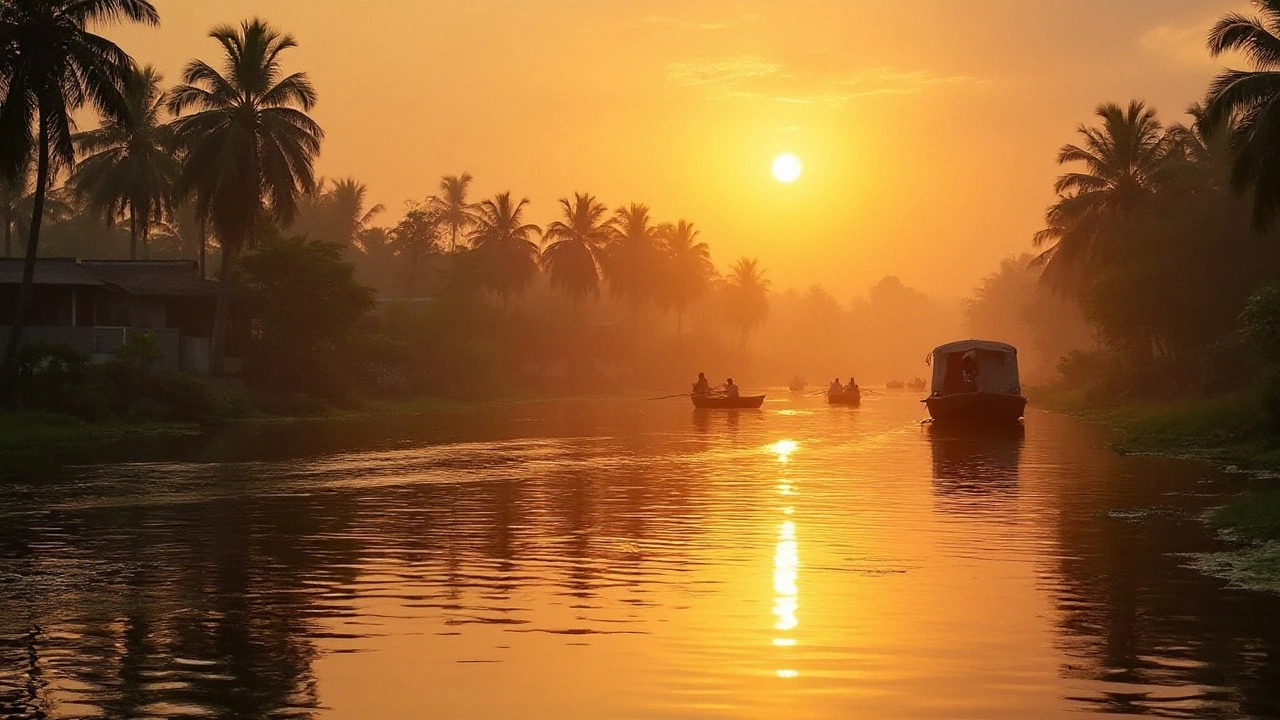
Tips for Aspiring Landscape Painters
Embarking on the path of landscape painting can be both an enriching and challenging journey. The natural world offers a vast canvas, yet translating its essence into art requires patience, observation, and a deep understanding of techniques. One vital tip is to spend ample time observing the environment you wish to paint. Notice the subtle shifts in light and shadow as the day progresses. Pay close attention to the interplay of colors in a sunset, or the way mist hangs over a dew-laden field in the morning. These observations will enhance your ability to replicate nature's dynamic beauty on canvas.
Another pertinent advice is not to rush the initial sketches. Preparing thumbnail sketches can greatly aid in planning composition and perspective. These quick studies help you decide where your focal points will be and how you can effectively lead the viewer's eye across your painting. Experiment with different perspectives; sometimes a low viewpoint can magnify the grandeur of mountains, while a higher perspective might capture the expansiveness of a valley.
Understanding color theory is key. Nature presents an extensive palette; thus, learning to mix colors to get the right hues is indispensable. A small, yet effective trick is to use complementary colors to create depth and vibrancy. For instance, accents of purple in the shadowed areas of lush green make them appear more vivid. As Albert Bierstadt once expressed, "Your choice of colors is more than half the painting; it determines the painting's mood and impact."
Practice using different brush techniques to add texture and life to your paintings. Brushing in a certain way can mimic the look of rustling leaves or a coarse mountain face. Different angles and pressures on the brush can remarkably transform how these elements appear. Mastery over such techniques can significantly elevate the realism and allure of your work.
To evolve as a landscape painter, consistently engage with the works of other artists, past and present. Analyzing masterpieces by artists like J.M.W. Turner or contemporary painters can offer inspiration and insight into methods that transcend time. Dive into art galleries or browse online collections, letting the artistry inform and expand your own style.
Lastly, embrace outdoor painting—plein air. Painting in the open air immerses you directly in your subject's atmosphere and light, allowing you to capture transient details unavailable when painting solely from photographs. Pack your tools and find a tranquil spot where you can focus. You'll be surprised at how this practice hones your observational skills and challenges you to capture the fleeting beauty of the present moment.
